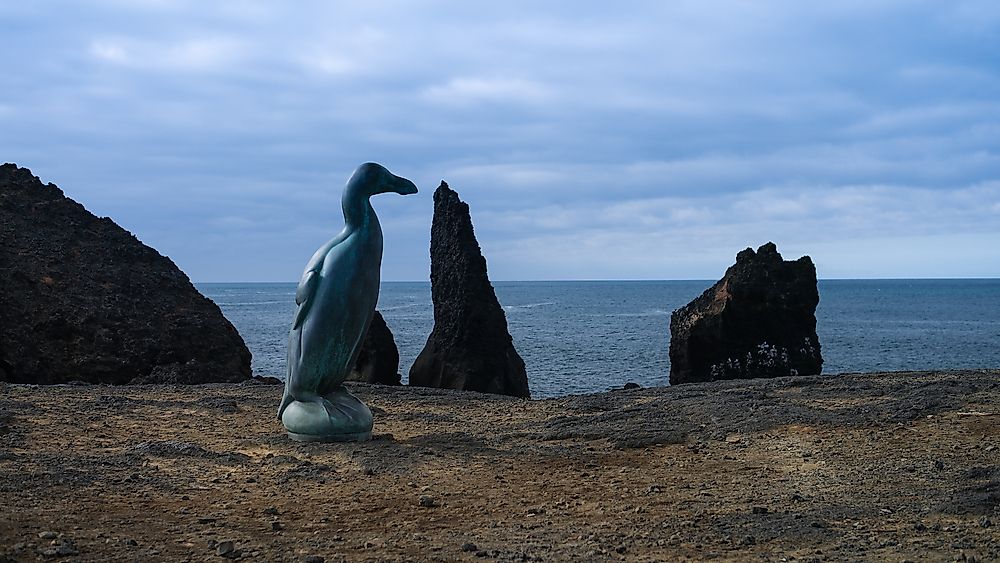7 Seabirds That Have Vanished From The Seas

According to a recent study, 15 animals have vanished from the oceans in recent times. Of these animals, 7 are marine birds. The number of marine extinctions is predicted to rise rapidly in the future as oceans are further exploited by humans. Here is a list of the 7 marine birds that have been the victims of human greed:
7. Labrador Duck
The Camptorhynchus labradorius was an endemic bird species of North America that became extinct after the Columbian Exchange. The last sighting of the bird happened in 1878. Today, only preserved specimens of the Labrador duck remain in museum collections across the world. Sandy coasts, inlets, shelters bays, etc., served as the habitat of the bird in the eastern United States. Molluscs constituted its primary diet. Although populations of the species were always small, a steep decline in the population of these birds occurred between 1850 and 1870. Reasons for the decline is yet not clear. Although the duck was hunted for food, its meat was not considered to be a delicacy but actually tasted bad and rotted quickly. Other reasons that could have speeded up its decline could be the feather trade in the area and the possible over-harvesting of its eggs.
6. Saint Helena Petrel
The seabird Pseudobulweria rupinarum, also known as the large Saint Helena petrel, lived in the Saint Helena Island in the Atlantic Ocean. The bird, a member of the Procellariidae family, was found nowhere else in the world. However, overpredation by humans led to the extinction of the bird.
5. Canary Islands Oystercatcher
The Haematopus meadewaldoi was a shorebird that inhabited some islands and islets in the Canary Islands archipelago of Spain. The bird was endemic to the region. Accounts of locals are the primary source of information about the ecology of the Canary Islands oystercatcher. It is believed that the bird preferred living on the rocky shores rather than sandy beaches. Mollusks and crustaceans constituted the diet of these birds. The population of the species started declining in the 19th century and by 1940, the bird had disappeared completely. The bird was last collected in 1913. Several surveys were later carried out to find out if the bird survived but yielded no results. The extinction of the bird was caused due to a variety of factors. The eggs of the bird were well-known for their exquisite taste and were thus collected for consumption. The birds were also hunted down by the cats and rats introduced on the islands by foreign visitors. The over-harvesting of the intertidal invertebrates, the primary food of these birds, also led to their demise.
4. Christmas Sandpiper
The Prosobonia cancellata is another bird that succumbed to anthropogenic pressures. It was a small shorebird that was found only in the Kiritimati Island of Kiribati. It vanished at around the first half of the 19th century. It is believed that predation by invasive species introduced on the island led to the disappearance of these birds.
3. Pallas's Cormorant
Also called the spectacled cormorant, the Phalacrocorax perspicillatus is an extinct seabird that was found in Russian coast of Kamchatka and in some islands of the Komandorski Islands archipelago. The bird was first identified in 1741 by Georg Steller, a German scientist. He described it as a large and nearly flightless bird. Although the bird was already a favorite food of the indigenous people of the region, the arrival of the Europeans speeded up its extinction. More and more foreign visitors arrived due to the lure of whaling and fur trading opportunities and many birds were collected for their feathers and meat. Thus, the birds soon became extinct.
2. Olson's Petrel
Also called the small Saint Helena petrel and scientifically named as Bulweria bifax, this seabird was endemic to Saint Helena, a volcanic island in the South Atlantic Ocean. Very little is know about this bird and most of the information has been derived from the study of its fossils. It is believed that the birds disappeared due to human interference soon after the Saint Helena island was discovered by the Europeans in 1502.
1. Great Auk -
The Pinguinus impennis was a species of flightless bird that became extinct in the 19th century. The birds foraged in the North Atlantic Ocean and bred on isolated, rocky islands with easy access to rich food supplies. It belonged to the alcid family of birds and was the second largest member of the family. Although the bird was flightless, it was a great swimmer. Fish and crustaceans constituted its diet. The birds lived in large colonies and were highly social in nature. Like most other extinct seabirds, the great auk suffered due to the exploration of their range by the Europeans. They became the prey of the explorers and were also used as a fishing bait. The down of the bird was also in great demand in Europe. Indiscriminate hunting and capturing of the species thus led to its extinction.











